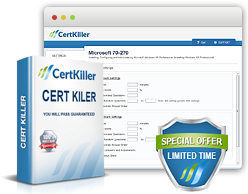Roadmap to a good score in ISTQB Certification
International Software Testing Qualification Board (ISTQB) Certification is an advanced test which aims at testing the knowledge of the candidate about the software testing in a broader sense. There is a one hour long computer based test which consists of 40 questions out of which at least 26 must be answered correctly in order to get the certification. The exam is not a hard in itself but the answers are calibrated in such a way that each one of them look very similar to another. So it is very important to read and re-read the questions and the given options until we are completely sure about the question and its right answer.
First of all it is very important to read the syllabus carefully and make a clear mind about the topics to be covered. In case of ISTQB exam all the questions are generally asked precisely from the syllabus and sometimes the wording too is similar. After getting the syllabus the next step must be the preparation and practice. We must try to solve the practice questions as much as possible to become familiar with the question pattern and to develop the ability to find out the right choice of the answer within very short period of time. Reading the syllabus book provided by ISTQB and solving the practice question are the two best and effective method to secure good score in ISTQB Certification. “Foundation of Software Testing: ISTQB” is the most recommended book for ISTQB. Following study steps can turn out to be really helpful for scoring good mark in ISTQB.
Not skipping any line of study material: It is very important to study the whole study material line by line without skipping any topics. Since the exam is a multiple choice objective type, the questions might be asked from anywhere. Small change in the explanation can lead to answering incorrectly.
Note down various standards: Concepts of various standards that we have to learn while preparing for the exam are quite important from exam point of view. So it is better to note down these standards while studying so that we can revise them time and again.
Drawing the figures to solve the problems: Certain questions in the syllabus like those related to coverage can be solved by drawing various diagrams like flow chart and flow graphs. Learning the correct way to draw those diagrams can help us answer the related questions easily and correctly.
Listing useful glossary and definitions: It is good to make a list of all the important glossary and definitions that are frequently asked in the exam. They must be kept in handy for repeated reading.
Getting the concept of useful topics: The special sections like branch, statement and path must be read and solved carefully and the concepts of those topics must be understood clearly. Frequent practice must be done in these topics to attempt them correctly since these questions tend to consume more time in the exam.
Learning the keywords and mnemonics: Some concepts are might be quite hard to remember during the preparation. So to make it easy we can remember the related keywords and link them to their topics. If needed we can also make and remember mnemonics for the hard topics so that it would be easier to remember.
Not wasting time on difficult questions: It is always wise to first attempt the questions we find easier to answer first and hard ones later. There is no point in wasting the time trying to solve the question we find difficult. Those questions can be left for the time being and we can come back later to solve those questions.
Around 25-30 days is recommended for the preparation of ISTQB exam given that you have good programming background and plan on spending about 3-4 hours daily on the studies. Studying for a long time is not enough for getting the certification. You must be able to understand the concepts and try to link it with practical testing experiment. Trying out the sample mock tests as much as possible is very beneficial for this exam. You have to analyze the questions answered correctly and those you fail to answer. A complete analytical diagram must be made after each sample mock test and study strategy must be made giving emphasis to topics you lack the expertise in. These steps form a roadmap for the exam and if all these steps are followed quite honestly, a good score can be ultimately ensured in the ISTQB exam.
About IT Exams Training
- Topics which can make a difference in business analyst certification
- IT certification preparation: The easy way out
- How to make your preparation for prince2 certification easier
- MCSE certifications: What can make you score better
- All you need to know about adwords certifications
- How to pass MCP certification and get good result?
- Roadmap to a good score in ISTQB certification
- Can you prepare for CAPM in 3 weeks? How?
- What are the requirements for PMP certification
- What to study for ITIL certifications
- Project management certifications: Why you need it?
- How to pass CCNA easily at minimum expenses
- Understanding the PMI and its preparation tricks
- PHR certifications - prospective and new career options
- Tips and tricks for TOGAF certification
- Why I need to pass Google analytics certification
